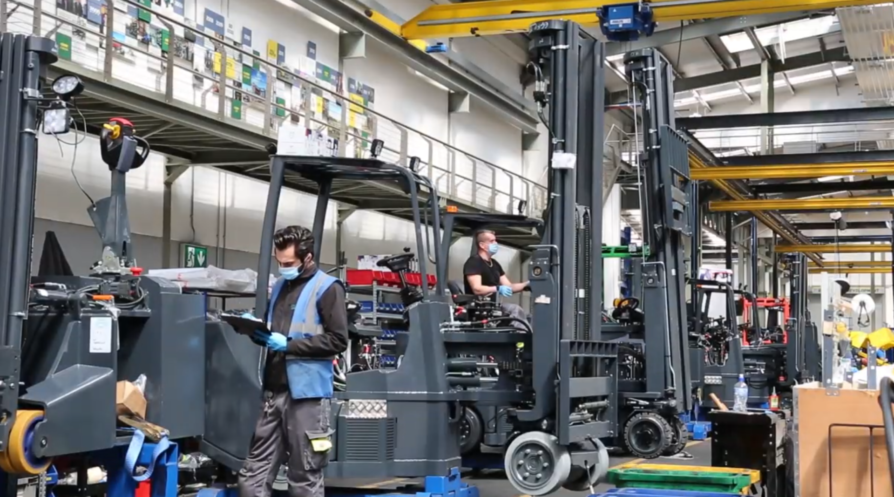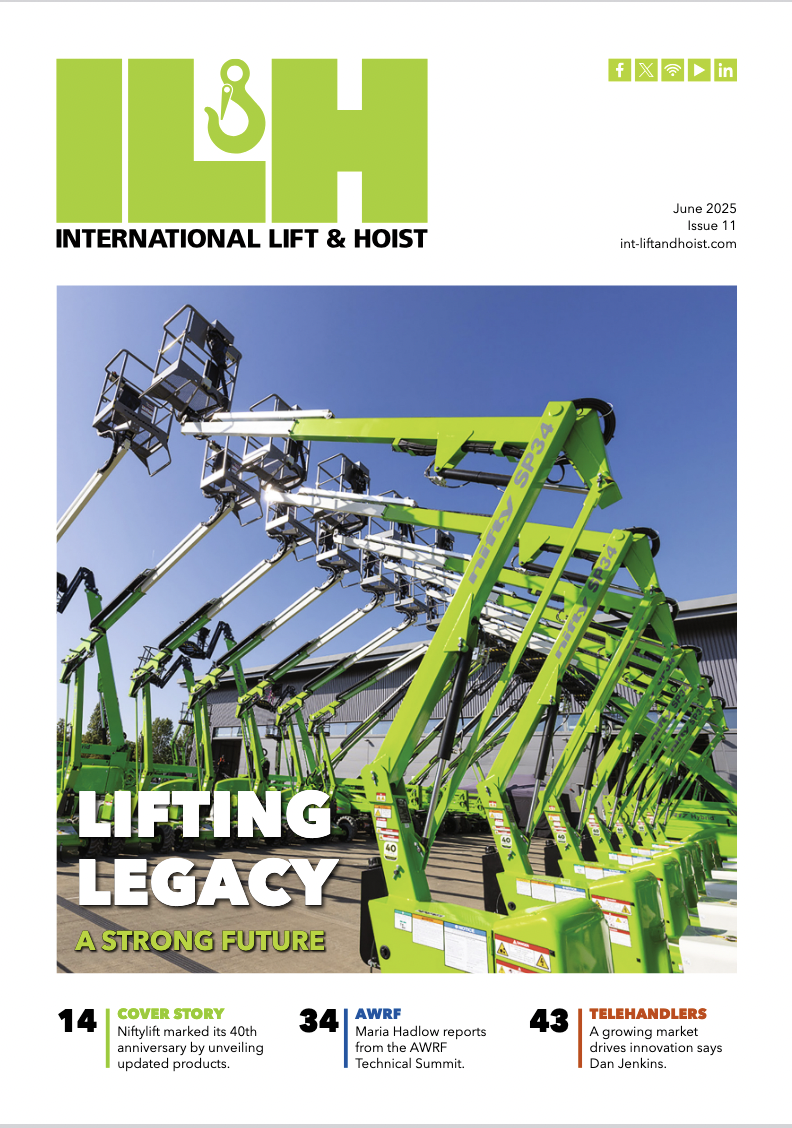)
Spatial awareness
Towards the end of May, Martin McVicar, managing director of Combilift took the initiative to contact members of the world’s press via a Zoom meeting to explain what his company was doing to keep production running, keep the workforce safe and help Combilift’s customers improve the efficiency and safety of their workplaces.
As some of you may have read in last month’s Leadership issue Combilift took the decision to close its factory down on 27 March despite the fact it could have stayed open in line with the Provision of Essential Services defined by the Irish Government. The reason for this was two-fold: to protect its employees and really prepare the factory for their return, so the workplace was the safest possible environment.
After three weeks, during which Combilift continued to pay a significant portion of full time employees’ wages, the factory reopened.
In addition to the social distancing measures that Combilift adopted early in May, Combilift had put in further measures. These included: keeping most doors in the plant permanently open, but those that cannot remain permanently open are fitted with copper on all the door panels, which significantly reduces the time that a virus can be harboured on the surface compared to stainless steel. Employees are issued with face masks and supervisors’ safety vests feature the 2m warning. Combilift has adapted security fobs for clocking in to replace the manual keying of numbers and employees are thermally-scanned as they enter the building to check for a raised temperature.
Social distancing measures have been partially achieved through employee segregation. Insted of a single shift operation, Combilift now has a two-shift system to reduce the overall number of people in the factory at any one time. It also increased cleaning and sanitising measures and closed its hot food canteen. It has segregated the plant into eight segments with different entrances and exits for staff in various departments. So with eight segments and two shifts the factory is divided into 16 sections.
The Combilift Factory at Monahan, Ireland, has only been opened a couple of years and is highly organised into product centric production lines. McVicar acknowledged that the new plant made it easier to reorganise but believes all manufacturers could take steps to improve distancing and safety. “The best advice I can offer,” he says, “is to adopt a two-shift pattern – if you currently run single shifts,” he offered. “Let office staff work from home if possible and make sure you keep in regular communication with the work force.”
Pre-COVID Combilift held regular townhall meetings with the whole workforce. “Now we have been using YouTube video clips to keep the team updated – it is so important to keep the lines of communication open,” McVicar says.
Combilift has also found a way to keep in touch with its customers and help them develop solutions in their workplaces, which can not only improve productivity and optimise their storage but also put social distancing measures in place.
“Our free warehouse design service has been a great tool for resolving problems for customers and enabling them to maximise warehouse space,” says McVicar. “And now we have developed a virtual site survey in-house system. So instead of the traditional method where a Combilift product manager walks through the site, taking measurements and coming back with a proposal we can now have a direct conversation with the customer.
“As most owners and managers are not travelling at the moment we can get a quick turnaround of this service too. Using technology such as MS Teams and Google maps we have found that this can give us even more accurate data than before for warehouses and yard areas.”
Many production and storage facilities need to increase the distance between their employees, and Combilift can help its customers achieve this. By showing them a simulated solution before they invest in new equipment or start moving heavy plant or racking they can free up more space with the minimum disruption.
Combilift has managed to keep its production flowing through the crisis and rode any supply chain hiatus by holding a good stock of components. “Our biggest challenge was in February with our Italian suppliers – we have 26 suppliers in Italy – but we do not run JIT [just-in-time] production and carry a buffer of raw materials, so the impact was manageable.”
McVicar admits that there have been some issues with container delivery, “We had problems getting deliveries into New Zealand, for example. We export to 85 countries and with larger equipment, such as the straddle carriers, we would usually send a Combilift expert with the machine and of course that hasn’t been possible. But at the moment we are still shipping full trailers.”











